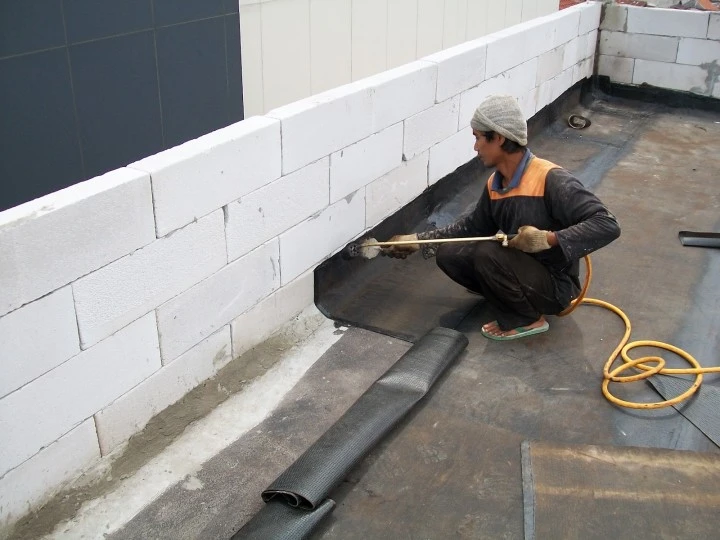
Indeed a dry basement is an important part of the house as it could be an extra space for your living room or could be a recreational area for you. Meanwhile, you could have a damp one due to multiple reasons, and this dampened basement area can raise serious safety issues where you might be worried as your structure might get weak, or you could have black mold growing back there, ultimately leading to health issues.
Reasons for a Wet Basement
As mentioned, basements can have water damage for multiple reasons, and it is essential to understand the root cause of a sagging basement for proper treatment.
-
Hydrostatic Pressure
The soil pressure and drainage system can create hydrostatic pressure around the basement walls, causing water to seep in through the pores of walls or any other cracked surface.
-
Improper drainage system
An improper drainage system or solid around the house can lead to moisture getting inside the basement area where the cracked pipes or clogged system can lead to water overflow or water may accumulate in some areas, which may continuously find paths to the basement area.
-
Basement Structure
The basement structures, like windows and doors, can be faulty without sealants, leading to water damage. The basement structure itself might have cracks in its walls, and most likely, the foundation might not be well-structured, accompanied by improper ventilation, leading to problems of wet basements.
Basement waterproofing is the process of preventing water from entering the basement structures and involves techniques of creating a barrier against water infiltration. The major objective of waterproofing is to prevent any moisture or water sources from entering the surface and sealing it so that it does not create leakage problems that hamper the structure itself or lead to mold formation.
Three steps can help ensure a waterproof basement. Firstly, the potential sources of water seepage need to be identified where water could seep into the basement through cracks or pores of walls, or there might be some structural damage near the damp area. Secondly, you need to develop a plan to prevent the leakages from happening in the designated area by sealing the source of moisture. And lastly, ensure that there is no further water penetration by having a solid waterproofing of the basement.
Methods of Basement Waterproofing
Exterior waterproof coating
When you feel a damp wall around the exterior of the walls, you must know that you are in need of basement protection, as water penetration from the exteriors can be a major source of moisture. Exterior waterproofing is a professional task that requires skilled professionals and can be labor-intensive as well; thus, it’s best if you hire an expert for this task.
There are multiple ways in which you can waterproof the basement from the exterior area, as mentioned.
-
Excavation
This process starts with the removal of dirt or soil around the walls and foundation, after which waterproof sealant is applied to create a barrier. Then, a drainage system is installed to redirect the water away from the basement area. Excavation is one of the most effective ways of waterproofing, owing to the fact that it can be time-consuming and costly at the same time.
-
Window well-covers
On the exterior part of the house, window well covers made of galvanized steel or molded plastic can be installed above the windows to ensure that water does not trickle through the windows. These well-covers can be useful to avoid debris collection with the dual benefit of allowing daylight to enter the basement area.
Interior waterproofing
Moisture formation inside the basement can lead to ripped painted structures and damp floors. When such problems occur, you are in need of interior waterproofing, which can be done by filling up cracks or sealing walls with membranes. When membranes are used to waterproof, a layer of insulation is created with the use of a mixture containing gypsum and lime cement, giving you a drywall. At times, you might not have proper access to the exterior part of the basement; that’s when interior waterproofing helps you get the best results.
Moisture Control
Moisture accumulation and condensation can be an important factor for the growth of mold in the damp areas of the basement. Basement humidifiers can be used to control moisture in places where proper ventilation is unavailable. Using humidifiers to control moisture is just a temporary solution to moisture control. Instead, you must be able to identify the root cause of moisture formation and create a permanent solution.
Sump pump systems
A sump pump system installation can be an effective solution to detect the water sources around the basement area. With detection, the system allows excess water to be thrown away with the help of discharge pipes. The system consists of check valves that prevent the back-flow of water, and these systems can be designed according to the area of the basement. Modern sump pump systems are smart enough to detect its failure and send alerts to you on your connected mobile devices about the related issue.
Sump pumps can even be battery-operated with backup systems, so even during power cuts, you don’t have to worry about water inflow. So, it’s better to invest in such backup systems to have a dry basement.
Benefits of Basement Waterproofing
All the effort, time, and money will save you a great basement. If done skillfully, waterproofing can even last for ten years. The benefits of waterproofing are further described below.
-
Durable foundation
The basement, which was once wet and unworthy, will now provide you with extra space. Waterproofing allows the basement to remain dry at all times, leading to an extended life. It will not wear out easily and is less likely to be damaged.
-
Healthy environment
With a sagging basement, you were at risk of mold development, which ultimately degraded the air quality, leading to breathing problems and allergies. However, with waterproofing, there are no signs of mold growth; thus, air quality is not compromised, creating a comfortable environment.
-
Energy Efficiency
A dry basement has better airflow, which enhances the temperature, and less regulation is required, saving hefty amounts of energy in heating and cooling systems in the basement area.
So, do not postpone your basement waterproofing works, as it can be a warning sign of the havoc that might follow in terms of health issues and costs in the future. Instead, if you observe signs of moisture, paint peeling off wet floors, or water running through, hire a skilled professional to detect the source and treat the problem before it’s too late.
We hope you found this blog post on Basement Waterproofing: Its Benefits and Methods, useful. Be sure to check out our post on Things To Check When Buying a Home With Basement for more great tips!
Have Experience in the Moving Industry? Want an Additional Income Stream? Work With All Around Moving!
Partner with us and we’ll help you profit while you use your expertise in the moving industry. Click here to learn more.





